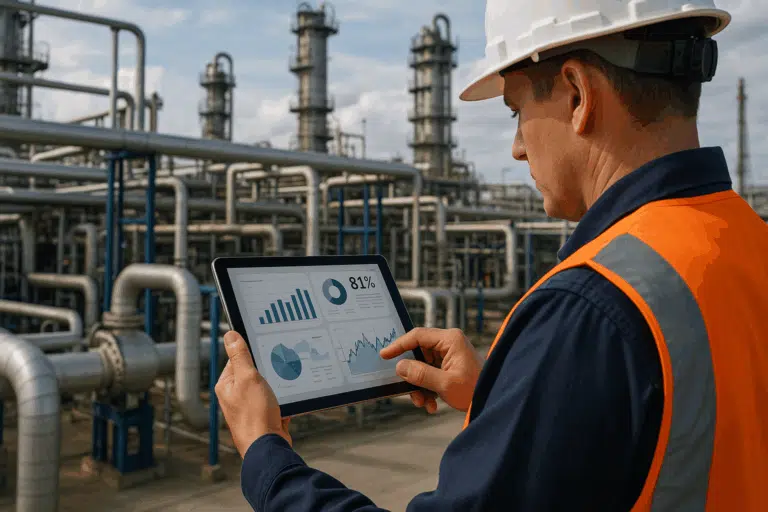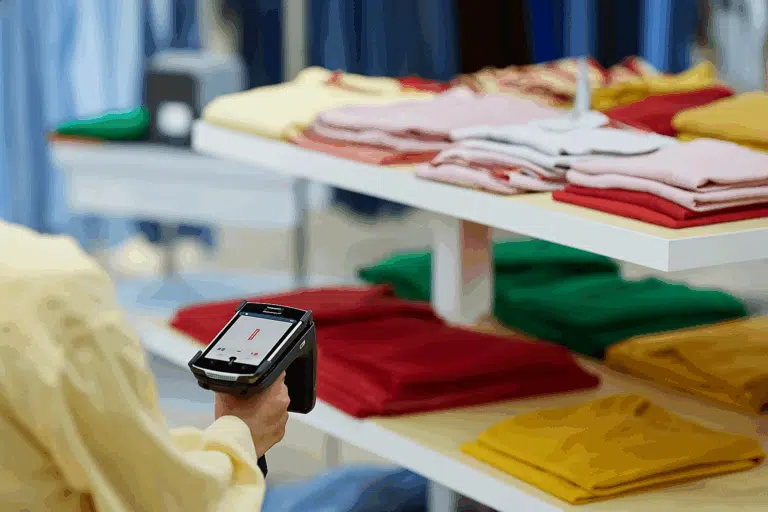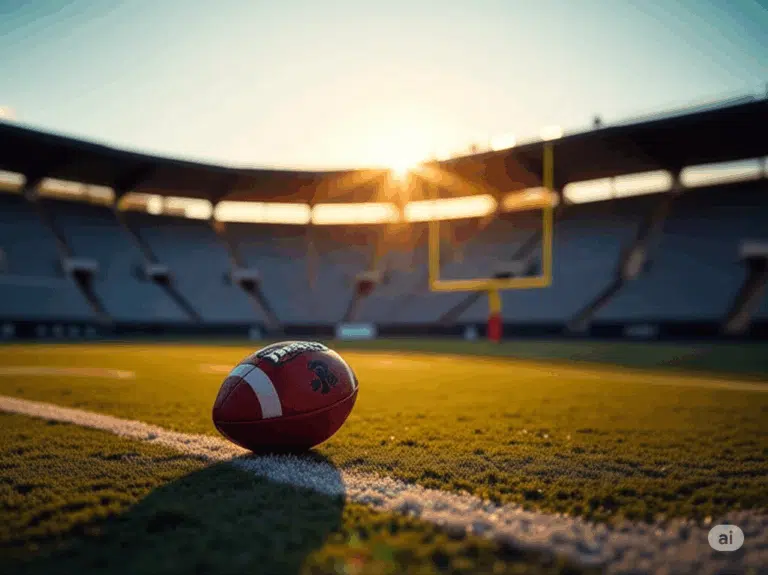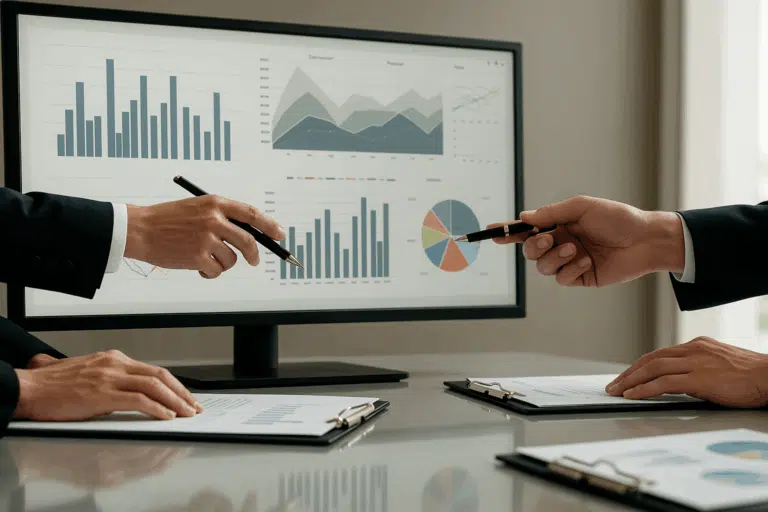RFID technology has become a cornerstone in modern industries, offering efficient solutions for tracking and management. These systems rely on small devices that come in various materials, including plastic, metal, and eco-friendly options. Each type serves unique purposes, catering to specific needs across sectors like retail, automotive, and livestock.
Plastic-based options are lightweight and cost-effective, making them ideal for inventory management. Metal variants, on the other hand, are highly durable and suitable for harsh environments. Eco-friendly alternatives are gaining traction, addressing sustainability concerns without compromising functionality.
Choosing the right material impacts performance, cost, and environmental footprint. For instance, metal tags excel in signal strength, while eco-friendly options reduce waste. Understanding these differences helps businesses optimize their operations while aligning with their goals.
Table of Contents
ToggleIntroduction to RFID Technology
From supply chains to retail, RFID has transformed how businesses operate. This technology uses radio waves to identify and track objects, offering unmatched efficiency. Over the years, it has evolved from simple tracking systems to advanced solutions that power modern industries.
One key distinction is between passive RFID and active systems. Passive systems rely on external readers to power the tags, making them cost-effective and ideal for short-range applications. Active systems, on the other hand, have their own power source, enabling longer-range tracking.
In logistics and supply chain management, RFID plays a critical role. It ensures real-time visibility, reduces errors, and speeds up processes. For example, retailers use it to manage inventory, while manufacturers track components across production lines.
The market for RFID technology continues to grow. According to recent data, its global value is projected to reach billions in the coming years. This growth reflects its increasing adoption across diverse sectors.
Understanding the basics of RFID sets the stage for exploring its components and operational methods. Whether it’s passive RFID or active systems, this technology is reshaping how businesses operate and innovate.
Understanding RFID Technology
At the heart of modern tracking systems lies a technology that relies on radio waves for seamless identification. These systems are built on three core components: the tag, the reader, and the antenna. Together, they form a network that enables efficient tracking and management across various industries.
Core Components and How They Work
The reader is the central device that sends and receives radio signals. It communicates with the tag through the antenna, which amplifies the signal for better accuracy. When a tag enters the reader’s range, it captures the signal and responds with its stored data.
This interaction is powered by electromagnetic activation. The rfid reader emits a signal that energizes the tag, allowing it to transmit information back. This process happens in milliseconds, making it ideal for fast-paced environments like retail or logistics.
Types of RFID Systems and Frequencies
Different systems operate at varying frequency ranges, each suited for specific applications. Low Frequency (LF) systems, typically 125-134 kHz, are ideal for short-range tasks like animal tracking. High Frequency (HF) systems, at 13.56 MHz, are commonly used in access control and payment systems.
Ultra-High Frequency (UHF) systems, ranging from 860-960 MHz, offer longer read ranges and are perfect for inventory management. The choice of frequency affects the system’s reliability, read range, and suitability for different environments.
Understanding these components and frequencies is essential for optimizing tracking systems. Whether it’s a reader in a warehouse or a tag on a product, each element plays a crucial role in ensuring smooth operations.
How RFID Tags Operate
Understanding how tracking devices function is key to leveraging their full potential. These systems rely on a seamless interaction between components to ensure accurate and efficient operations. At the core of this process is the transfer of power from the reader to the tag, enabling data transmission in real-time.
Passive systems operate through an electromagnetic interrogation pulse. The reader sends a signal that energizes the tag, allowing it to respond with stored information. This energy harvesting mechanism eliminates the need for a battery, making passive options cost-effective and low-maintenance.
In contrast, active rfid systems include an internal battery to power the tag. This enables extended read ranges and continuous operation, ideal for applications like vehicle tracking or large-scale asset management. However, the reliance on a battery increases maintenance requirements and costs.
Energy transfer efficiency is a critical factor in these systems. The reader’s signal must provide sufficient power to activate the tag, especially in environments with interference. Practical considerations like signal strength and device limitations play a significant role in system performance.
For example, in retail, passive systems are commonly used for inventory management due to their affordability and simplicity. Meanwhile, active rfid is preferred in logistics for tracking high-value assets over long distances. Understanding these operational differences helps businesses choose the right solution for their needs.
Differentiating RFID Tag Materials
Material selection plays a crucial role in determining the efficiency and durability of tracking systems. Each material offers unique benefits tailored to specific industry needs, impacting performance, cost, and environmental footprint. Understanding these differences helps businesses make informed decisions.
Plastic RFID Tags: Durability and Cost
Plastic-based options are lightweight and highly versatile, making them a popular choice for many applications. They are cost-effective, ideal for businesses looking to manage budgets without compromising functionality. These devices are also durable, capable of withstanding everyday wear and tear.
In retail, plastic tags are commonly used for inventory management due to their affordability and ease of use. They are also suitable for short-term applications, such as event tracking or temporary asset management. Their lightweight nature reduces shipping costs, making them a practical choice for large-scale operations.
Metal RFID Tags: Strength and Signal Challenges
Metal variants are known for their superior strength and durability, making them ideal for harsh environments. They are often used in industries like automotive and manufacturing, where devices must withstand extreme conditions. However, metal can interfere with signal transmission, posing challenges for certain applications.
Despite these challenges, metal tags excel in scenarios requiring long-term durability. For example, they are commonly used in asset tracking for heavy machinery or equipment. Their robust construction ensures they remain functional even in demanding settings.
Eco-Friendly RFID Options: Sustainable Alternatives
Eco-friendly alternatives are gaining traction as businesses prioritize sustainability. These options are made from biodegradable or recyclable materials, reducing environmental impact without compromising performance. They are ideal for companies aiming to align their operations with green initiatives.
For instance, eco-friendly tags are used in industries like agriculture and retail, where sustainability is a key concern. They offer a viable solution for businesses looking to minimize waste while maintaining efficient tracking systems.
| Material | Cost | Durability | Signal Strength | Environmental Impact |
|---|---|---|---|---|
| Plastic | Low | Moderate | High | Moderate |
| Metal | High | High | Low | High |
| Eco-Friendly | Moderate | Moderate | High | Low |
Choosing the right material depends on the specific needs of your application. Whether it’s cost-effective plastic, durable metal, or sustainable eco-friendly options, each material offers distinct advantages. By understanding these differences, businesses can optimize their tracking systems for better performance and alignment with their goals.
Selecting the Right rfid tags for Your Application
Choosing the right tracking solution depends on your specific operational needs and environment. Whether you’re in retail, agriculture, or manufacturing, the application dictates the type of system you should use rfid for. Understanding the key factors ensures optimal performance and cost-efficiency.
Material selection is critical. For instance, plastic options are ideal for retail inventory due to their lightweight and affordability. Metal variants, on the other hand, excel in industrial settings where durability is essential. Eco-friendly materials are perfect for agricultural applications, aligning with sustainability goals.
Frequency compatibility is another crucial factor. Low-frequency systems are best for short-range tasks like animal tracking, while ultra-high-frequency options suit inventory management. The right frequency ensures seamless integration into your existing rfid system.
Passive and active systems also play a role. Passive options are cost-effective and low-maintenance, ideal for retail or event tracking. Active systems, with their longer range, are better for large-scale asset management in logistics or manufacturing.
Here’s a quick comparison to guide your decision:
| Application | Material | Frequency | System Type |
|---|---|---|---|
| Retail | Plastic | UHF | Passive |
| Industrial | Metal | HF | Active |
| Agriculture | Eco-Friendly | LF | Passive |
Real-life examples illustrate these choices. A retail chain might use rfid for inventory management, opting for plastic tags and a passive system. In contrast, a manufacturing plant could choose metal tags and an active rfid system for tracking heavy machinery.
Aligning your choice with the overall system design is essential. Consider factors like read range, environmental conditions, and budget. By evaluating these elements, you can select the right solution for your application and maximize efficiency.
Materials and Considerations in RFID Tag Design
The design of tracking devices involves careful consideration of materials and environmental factors to ensure optimal performance. From substrates to antenna configurations, each element plays a critical role in determining the efficiency and durability of the device.
Substrates and Antenna Configurations
Substrate selection is a key factor in the design process. The substrate acts as the base material for the device, influencing its durability and flexibility. Common materials include polyester and polyimide, which offer a balance of strength and adaptability.
Innovative antenna designs are equally important. The antenna determines how well the device transmits and receives signals. Configurations like dipole and loop antennas are tailored to specific applications, ensuring reliable performance in various environments.
For example, in retail, thin-film substrates paired with compact antenna designs are ideal for inventory management. In contrast, industrial applications may require robust substrates and larger antenna configurations to withstand harsh conditions.
Environmental Factors and Installation Tips
Environmental conditions significantly impact the performance of tracking systems. Factors like temperature, humidity, and physical obstructions can interfere with signal transmission. For instance, metal surfaces may disrupt the antenna’s effectiveness, requiring specialized designs to mitigate interference.
Here are some practical installation tips to optimize performance:
- Ensure the device is placed on a flat, non-metallic surface for better signal reception.
- Avoid installing the object near sources of electromagnetic interference, such as machinery or electronic equipment.
- Use protective casings in extreme environments to shield the device from damage.
In the automotive industry, for example, tracking systems are often installed on plastic or composite parts to avoid signal disruption. Similarly, in agriculture, devices are placed on non-metallic objects like wooden crates or plastic containers.
By considering these factors during the design and installation process, businesses can ensure their tracking systems operate efficiently and reliably, even in challenging conditions.
Passive vs Active RFID: Pros and Cons
Tracking systems vary widely, with key differences in power sources and operational range. Passive rfid tag systems rely on energy harvested from readers, making them cost-effective and low-maintenance. In contrast, active rfid tag systems use internal batteries, enabling longer read ranges and continuous operation.
One major advantage of passive systems is their affordability. They are ideal for short-range applications like inventory management, where time and cost efficiency are critical. However, their read range is limited, typically up to 10 meters. Active systems, on the other hand, can achieve ranges of over 100 meters, making them suitable for large-scale asset tracking.
Maintenance is another factor to consider. Passive systems require minimal upkeep since they lack batteries. Active systems, while more powerful, need regular battery replacements, increasing long-term costs. This trade-off between performance and maintenance is crucial when choosing the right system.
In terms of time, passive systems respond almost instantly, making them ideal for fast-paced environments like retail. Active systems, though slightly slower due to battery-powered operation, excel in scenarios requiring continuous monitoring, such as vehicle tracking.
Here’s a quick comparison of the two systems:
- Passive rfid tag: Cost-effective, short-range, low maintenance, instant response time.
- Active rfid tag: Longer range, continuous operation, higher maintenance, slightly slower response time.
Specific scenarios highlight the strengths of each system. For example, passive systems are widely used in retail for inventory management due to their affordability and quick read time. Active systems are preferred in logistics for tracking high-value assets over long distances.
Understanding these differences ensures businesses select the right system for their needs. Whether it’s a passive rfid tag for cost efficiency or an active rfid tag for extended range, the choice impacts performance and operational success.
Frequency, Signal, and Reader Considerations
The efficiency of tracking systems depends heavily on the right radio frequency selection. Choosing the correct frequency ensures optimal performance, read range, and data accuracy. Frequencies measured in MHz play a critical role in determining how well the system operates in different environments.
Low-frequency bands, typically 125-134 kHz, are ideal for short-range applications like animal tracking. High-frequency systems, operating at 13.56 MHz, are commonly used in access control and payment systems. Ultra-high-frequency (UHF) bands, ranging from 860-960 MHz, offer longer read ranges and are perfect for inventory management.
Signal processing is another key factor. The number of devices within a range can influence performance. Too many devices in close proximity may cause signal interference, reducing accuracy. Advanced systems use anti-collision algorithms to manage multiple devices simultaneously, ensuring smooth operation.
Different radio designs interact uniquely with various devices. For example, dipole antennas are ideal for long-range applications, while loop antennas are better suited for short-range tasks. The choice of antenna design depends on the specific requirements of the application.
Practical examples highlight these considerations. In retail, UHF systems with dipole antennas are used for inventory management due to their long-range capabilities. In industrial settings, high-frequency systems with loop antennas are preferred for access control.
Understanding these technical aspects ensures the right system selection for your needs. Whether it’s the radio frequency, MHz range, or number of devices, each factor plays a crucial role in optimizing performance.
Practical Applications of RFID Technology
Modern industries rely on advanced tracking solutions to streamline operations and enhance efficiency. These systems are widely used across retail, agriculture, and industrial sectors, offering significant benefits in identification and management. From monitoring inventory to tracking livestock, the applications are diverse and impactful.
Retail, Inventory, and Asset Tracking
In retail, tracking systems play a crucial role in managing inventory and monitoring asset movements. These systems enable real-time identification of products, reducing errors and improving accuracy. For example, a retail department can use these solutions to track stock levels and prevent overstocking or shortages.
Asset tracking is another key application. Businesses can monitor the movement of equipment and supplies across multiple locations. This ensures efficient resource allocation and reduces the risk of lost or misplaced items. The ability to streamline inventory management saves time and labor, boosting overall productivity.
Livestock, Cattle, and Industrial Applications
In agriculture, tracking systems are essential for livestock management. The USDA mandates the use of these technologies for cattle identification to ensure traceability and disease control. Farmers can monitor the health and location of their animals, improving herd management and compliance with regulations.
Industrial environments also benefit from these systems. They are used for asset tracking and maintenance, ensuring machinery and equipment are properly monitored. For instance, a manufacturing department can use these solutions to track the usage and condition of tools, reducing downtime and repair costs.
| Application | Key Benefit | Example |
|---|---|---|
| Retail | Efficient inventory management | Tracking stock levels in a retail department |
| Agriculture | Livestock identification | Monitoring cattle health and location |
| Industrial | Asset tracking and maintenance | Monitoring machinery usage and condition |
These applications highlight the versatility of tracking systems in modern industries. By improving identification and management processes, businesses can reduce labor costs, increase efficiency, and achieve better operational outcomes.
Step-by-Step Guide to Installing RFID Tags
Installing tracking devices correctly ensures they perform at their best. Whether you’re working with a specific type rfid or a general system, following the right steps is crucial. This guide provides a clear way to ensure your setup is efficient and effective.
Step 1: Choose the Right Location
Proper placement is essential for optimal performance. Identify a flat, non-metallic surface to attach the tag used. Avoid areas with high interference, such as near machinery or electronic devices. This ensures the signal remains strong and consistent.
Step 2: Prepare the Surface
Clean the surface thoroughly to remove dust or debris. Use a mild cleaning solution to ensure the adhesive sticks properly. For metal surfaces, consider using a spacer to minimize signal disruption. This step is critical for the longevity of the tag used.
Step 3: Apply the Tag
Carefully peel off the backing and press the tag used firmly onto the surface. Hold it in place for a few seconds to ensure proper adhesion. For curved surfaces, use a flexible adhesive or mounting bracket to secure the device.
Step 4: Test the System
Once installed, test the type rfid to ensure it’s functioning correctly. Use a reader to verify the signal strength and readability. If the signal is weak, adjust the placement or consider using a different way to attach the device.
Step 5: Maintain and Monitor
Regularly check the tag used for signs of wear or damage. Replace it if necessary to maintain optimal performance. Keep a log of installation dates and locations for easy tracking and maintenance.
“Proper installation is the foundation of a reliable tracking system. Taking the time to do it right ensures long-term success.”
Tools and Techniques
- Adhesive: Choose a strong, weather-resistant adhesive for outdoor use.
- Spacers: Use spacers for metal surfaces to reduce signal interference.
- Readers: Test with a compatible reader to verify functionality.
Common Pitfalls to Avoid
| Issue | Solution |
|---|---|
| Weak Signal | Reposition the tag or use a spacer. |
| Adhesive Failure | Clean the surface thoroughly before application. |
| Interference | Avoid placing near electronic devices or machinery. |
By following these steps, you can ensure your type rfid system operates efficiently. Proper installation not only enhances performance but also extends the lifespan of the tag used. Taking the right way to set up your system saves time and resources in the long run.
Troubleshooting Common RFID Tag Issues
Effective tracking systems often face challenges that can disrupt operations. Understanding these issues and how to resolve them is crucial for maintaining efficiency. Common problems include interference, misreads, and limited read range, which can stem from the reader, the tag, or environmental conditions.
Interference is a frequent issue, often caused by nearby electronic devices or metal surfaces. Misreads can occur when tags are improperly positioned or damaged. Limited read range may result from incorrect frequency settings or insufficient power supply. Identifying the root cause is the first step in troubleshooting.
To address these problems, start by checking the state of the reader and tag. Ensure the reader is powered correctly and the tag is undamaged. Repositioning the hardware can also improve signal strength. Adjusting settings, such as frequency and power levels, may resolve issues related to interference or range.
In logistics, for example, interference from metal containers can disrupt tracking systems. Repositioning tags or using spacers can mitigate this problem. In retail, misreads often occur due to improper tag placement. Ensuring tags are attached securely and in optimal locations can improve accuracy.
“Proper troubleshooting saves time and resources, ensuring systems operate at peak performance.”
Here are some best practices to use when troubleshooting:
- Regularly inspect tags and readers for damage or wear.
- Test the system in different environments to identify potential issues.
- Consult technical support or manuals for advanced troubleshooting steps.
By following these tips, businesses can minimize disruptions and maintain efficient tracking systems. Whether it’s adjusting settings or repositioning hardware, a proactive approach ensures smooth operations. For further assistance, state your specific issues to technical support teams for tailored solutions.
Security and Privacy Considerations for RFID Systems
Security and privacy are critical concerns in modern tracking systems. Unauthorized access to sensitive information can lead to significant risks, including identity theft and data breaches. Protecting the datum stored on these devices is essential to maintain trust and compliance with regulations.
One major challenge is the potential for unauthorized scanning. Without proper safeguards, malicious actors can intercept and misuse the information transmitted by these systems. This poses a threat to both personal privacy and national security.
To address these concerns, robust security measures have been developed. Encryption is a key tool, ensuring that the datum remains secure even if intercepted. Basic access controls, such as password protection and authentication protocols, further enhance security.
Here are some essential measures to secure tracking systems:
- Use advanced encryption to protect transmitted information.
- Implement access controls to restrict unauthorized scanning.
- Regularly update security protocols to address emerging threats.
In the passport sector, these systems are used to store biometric information. Without proper encryption, this sensitive data could be exploited. Similarly, in retail, tracking systems manage inventory and customer data, making privacy a top priority.
“Effective security measures are the foundation of trust in modern tracking systems.”
The implications of these technologies extend beyond individual privacy. National security can also be at risk if sensitive datum falls into the wrong hands. For example, unauthorized access to military or government tracking systems could compromise critical operations.
By prioritizing security and privacy, businesses and governments can harness the benefits of these systems while minimizing risks. Whether it’s protecting personal information or safeguarding national interests, robust measures are essential for success.
Future Trends and Innovations in RFID Technology
Integration with Internet of Things (IoT)
The integration of tracking systems with IoT is another game-changer. By connecting devices to the internet, businesses can create smarter, more connected systems. This allows for real-time data collection and analysis, improving decision-making and operational efficiency.
For example, in smart cities, IoT-enabled tracking systems can monitor traffic flow and optimize routes. In agriculture, they can track livestock and monitor environmental conditions. The possibilities are endless, and the benefits are significant.
“The integration of tracking technology with IoT is transforming industries, enabling smarter and more efficient operations.”
Research and development efforts are also focusing on improving range and signal processing. These advancements are critical for expanding the application possibilities of tracking systems. From warehouses to retail stores, the ability to track assets over longer ranges is becoming a reality.
Despite these advancements, challenges remain. Widespread adoption requires addressing issues like cost, compatibility, and security. However, with ongoing research and innovation, the future of tracking technology looks promising. Businesses that embrace these trends will be well-positioned to thrive in the years to come.
Conclusion
Modern tracking solutions have revolutionized how industries manage assets and operations. From material selection to system design, choosing the right components ensures optimal performance and efficiency. Whether it’s durable metal or eco-friendly options, the right choice depends on the application.
Security and privacy are critical when using rfid systems. Advanced encryption and access controls protect sensitive data, ensuring compliance and trust. Troubleshooting strategies, like repositioning devices or adjusting settings, help maintain seamless operations.
Looking ahead, innovations like IoT integration are shaping the future of tracking technology. This advancement offers smarter, more connected systems that benefit both industries and customer interactions. By leveraging the right software and tools, businesses can stay ahead in a competitive landscape.
In conclusion, adopting modern tracking solutions enhances efficiency, security, and scalability. By focusing on best practices and future trends, industries can unlock new possibilities and drive success.
FAQ
What are the main components of an RFID system?
An RFID system consists of three core components: the tag, the reader, and the software. The tag stores data, the reader captures it, and the software processes the information for use.
What are the differences between passive and active RFID tags?
Passive tags rely on the reader’s signal for power and have a shorter range, while active tags have their own power source, offering a longer read range and additional features.
How do I choose the right RFID tag for my application?
Consider factors like material, frequency, and environment. Plastic tags are cost-effective, metal tags are durable, and eco-friendly options support sustainability.
What frequencies are used in RFID technology?
Common frequencies include low frequency (LF) at 125-134 kHz, high frequency (HF) at 13.56 MHz, and ultra-high frequency (UHF) at 860-960 MHz, each suited for specific applications.
Can RFID tags be used in harsh environments?
Yes, metal and ruggedized plastic tags are designed to withstand extreme conditions, making them ideal for industrial or outdoor use.
What are the security risks associated with RFID systems?
Risks include data interception and unauthorized access. Encryption and secure protocols can mitigate these concerns.
How do I install RFID tags effectively?
Ensure proper alignment with the reader, avoid interference from metal or liquids, and test the system to confirm optimal performance.
What are the future trends in RFID technology?
Integration with IoT, and advancements in energy-efficient designs, expanding their use across industries.
Can RFID tags be recycled or reused?
Eco-friendly options are designed for recycling, and some tags can be reprogrammed for reuse, reducing environmental impact.
What are the common issues with RFID systems and how can I troubleshoot them?
Common problems include signal interference and tag misalignment. Solutions include adjusting reader placement, using shielding, and testing different frequencies.





























